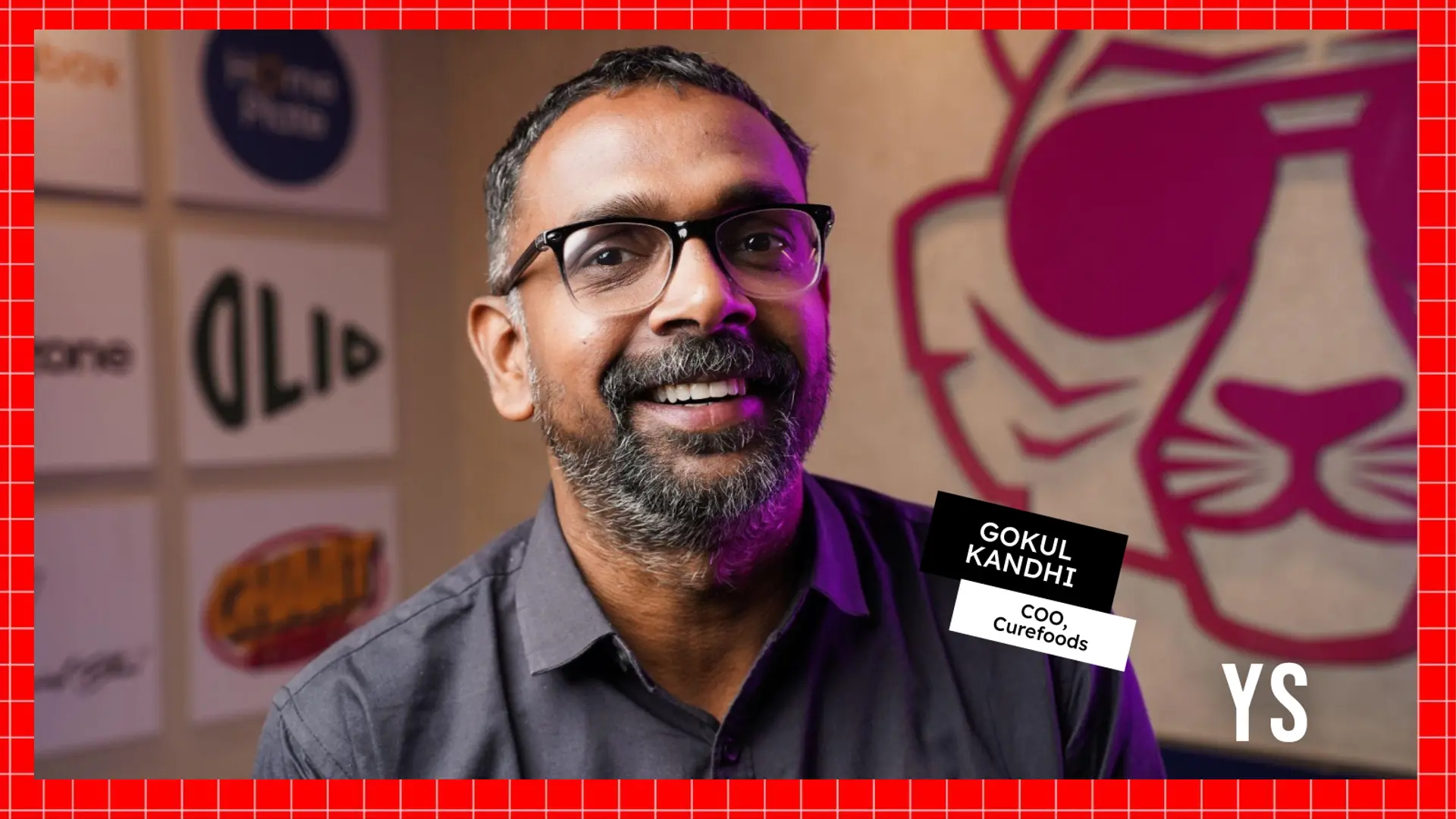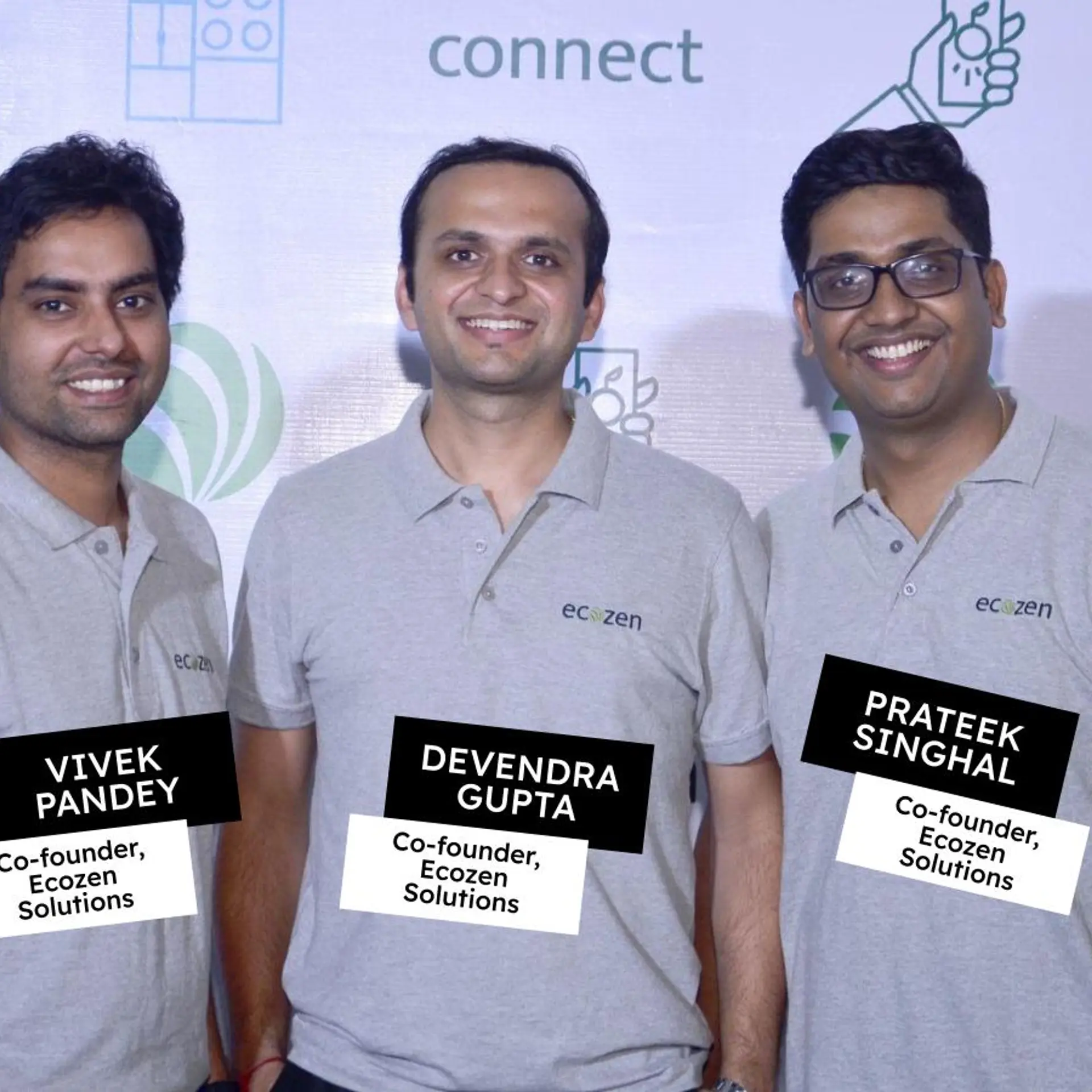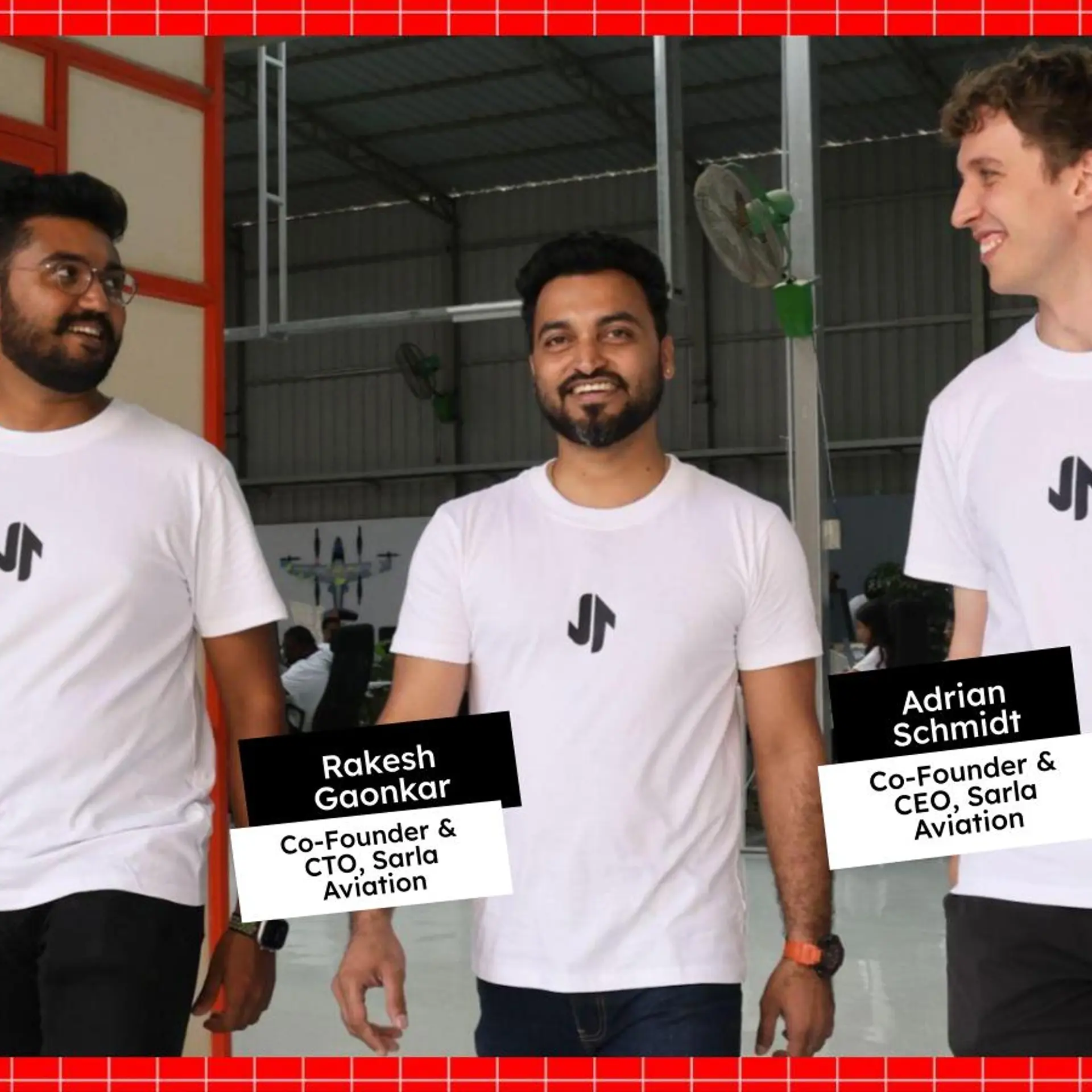[Techie Tuesday] From the US to India’s hinterlands, how Rikin Gandhi built a sustainable agritech ecosystem for farmers
In this week’s Techie Tuesday, we feature Rikin Gandhi, Founder and CEO of Digital Green, who is using technology to amplify the voices of farmers.
Using technology for your own good may not impress many, but making a difference at a community level means everything. This has been the mantra of Rikin Gandhi ever since he stepped into the lives of Indian farmers in 2006.
Born in the US, Rikin’s parents are originally from Gujarat. For a long period, the only connection he had with India was visiting cities like Ahmedabad and Mumbai during holidays with his family.

Rikin with his family
Growing up, he was inspired by astronauts and dreamt of wanting to go to space. So, he studied aerospace engineering and computer science and got a pilot licence with an aspiration to get into the Air Force and try to apply for NASA.
“But along the way, I realised that I have only looked at the first part of the journey of these astronauts. Many of them, after seeing earth from a new perspective, became school teachers and farmers to connect with people and use their skills for the greater good,” Rikin tells YourStory.
Today, as the founder and CEO of Digital Green, a not-for-profit and spin-off entity of Microsoft Research, Rikin is working with government bodies and training frontline workers to use digital tools to assess gaps, collect data, and use technology as an entry point to transform systems.
These frontline workers can be local farmers or the selected representatives from the village or local representatives working with several government bodies actively working in the region.

Digital Green team working with farmers in India
The Delhi-based organisation trains frontline workers from local communities to shoot videos of farmers in their own context, language, and culture, creating an ultimate knowledge bank.
With online and offline components, their training curriculum combines instructional videos and a mobile app to assess and spot improvement areas.
Digital Green has also developed multiple tools to help disseminate and use information in a productive manner. This includes CoCo (connect online connect offline), which helps farmers to collect and visualise crucial insights anytime, anywhere, on any device – regardless of network connectivity; and FarmStack – a platform that helps organisations share data with one another.
Today, with more than 60,000 videos produced in 50 languages, screened offline in communities that have limited electricity and Internet connectivity, Digital Green has worked with 2.5 million farmers. About 75 percent of them are women who have been able to see an increase in their productivity and incomes by 30-35 percent on an average.
“By working with local governments and NGOs at a grassroot level, we are able to reduce their cost of operation by incorporating sustainable agricultural practices,” Rikin adds.
The turning point
Rikin shares that after completing his degree in aeronautical engineering from MIT in 2005, he was waiting to apply to the Air Force as a pilot. “However, I had to go for an eye surgery for which I had to take a two-year break,” he recalls.
During this break, Rikin found his friends in Mumbai working on a biodiesel venture. As curiosity kicked in, he went along, strategised a micro-utility startup to generate sustainable sources of biofuels and income in rural Maharashtra.

Rikin at Norfolk Airbase
But this project went down in the next six months. From there, he joined Oracle where Rikin researched and produced a linguistic-based search system for text retrieval that used phonetic similarity and entity extraction for document matching. “Two patents are pending approval for this technology,” shares Rikin.
While working at Oracle, Rikin got the opportunity at Microsoft Research in 2006. They were looking at different areas of development from microfinance, education, and agriculture, among others to see if there’s a role for tech in these spaces.
“This was pre-ecommerce, pre fintech, and pre-mobile even in the cities, let alone rural India. And unlike today, agriculture was the last area where anyone could think of using technology,” Rikin tells YourStory.
Life as a Microsoft researcher
As a researcher at Microsoft, he spent the first six months going to villages near Bengaluru with an NGO called Green Foundation.
“It was a totally novel thing for me. I didn’t even know the language. I spent a lot of that time just working and observing how the Green Foundation field staff was interacting with the communities and gradually built relationships with them,” he reminisces.
There were a lot of other challenges. There was only one cell phone tower with basic voice connectivity, farmers' knowledge was limited to programs like Krishi Darshan, which they seldom watched due to electricity issues, and not everyone had a television.
At the same time, there was a sister project run by a Princeton University Professor called Randy Wang who was teaching children in slum areas. They recorded them on video and passed them to surrounding government school teachers.

Rikin as Microsoft Researcher with village people (early days)
“We decided to see how we can translate the same to agriculture. But since there was no set curriculum, we started listening to people and assessing gaps. Of course, there were a lot of trials and errors before we found the most effective approach,” he adds.
They first used MP3 players with audio clips from farmers to share best practices with each other. Then came the posters. However, the most effective were audiovisual videos, where they shoot the farming techniques used by someone in the community in their own or nearby villages.
They were initially using big analogue camcorders with external microphones to shoot videos. These videos were shown on large CRT televisions, which had to be carried around in a cart to different parts of a village to show the video.
“But with all the hassle, with just myself behind the camera for most of the first 300 odd videos that were produced, we helped demonstrate improved farming practices to the farmers from their own community members,” he adds.
Taking a step ahead with technology
From analogue camcorders and offline projectors, the videos were later shifted to VCDs and DVDs. And with the smartphone revolution, the videos started getting shot on mobile phones and screened on portable mini projectors.
In 2008, Digital Green spun off from Microsoft as an independent entity to take this initiative to another level.
As a first step, the team stopped producing videos on its own and started training the members from the local community in partnership with the local government authorities and NGOs.
“The idea was to offer a digital layer over the existing systems to help them disseminate and collect information in an effective and efficient manner,” he adds.

It's a hub and spoke network in which, at a district level, they train four to five people, which includes people from the local community and from government extension groups - like the National Rural livelihood mission or the Ministry of Agriculture.
They were then trained on how to do some basic storyboarding, shooting videos with some basics like facilitation and interview skills. They were also taught editing using simple tools like Windows Movie Maker and YouTube editor. These were done in a way to facilitate a discussion so that the community can ask questions, get feedback, and, get support to actually do this in the field.
For instance, the Department of Agriculture and Cooperation, Government of Andhra Pradesh (DoAC–GoAP) already has a community resource person (CRP) group in place.
However, despite the best extension interventions, influencing passive listeners has always been a major challenge. In this context, DoAC–GoAP collaborated with Digital Green to document and disseminate best practices in the form of videos to farmers to enhance their learning.
“As one of the training participants shared, when she reached her village after three days of training and started disseminating the video, a palpable amazement occurred within the crowd — more so when they realised that the people featured in the videos were farmers from the same district,” Rikin shares.
During COVID-19, these video sessions had to be paused because of social distancing requirements.
“But rural Internet usage has really accelerated during the pandemic. We now have our own YouTube channel, which has more than 69 million views,” he says.
Digital Green also provides frontline workers with WhatsApp chatbots to engage rural communities like a triage thing, pushing automated messages based on like, location, and time or season of the year.

Learnings on the way
Rikin believes that technology has the power to not only make things easier but also bridge the gaps that exist in rural communities.
Sharing one of the incidents, he says, he once shot a video with a woman who was ostracised from the village because she was widowed. She lived in the outskirts and was using a bio-fertiliser concoction for farming.
“We screened that video in the main town center. While people initially resisted, as we kept on playing it, the techniques used by her attracted the villagers. Eventually, that woman came to the centre and people asked her their queries. It was exciting to see how technology can bridge these divisions,” he adds.
With the success achieved in India, Digital Green has expanded its initiatives in Ethiopia and Ghana. It has integrated radio, mobile, and video channels in partnership with the Government of Ethiopia’s Ministry of Agriculture. A reality TV show about Digital Green was co-produced with NDTV in India as well.
As a techie at heart, Rikin believes that one needs to always take up healthy scepticism to their work, and on assessing that, we are actually creating value.
He advises techies to immerse themselves in spaces which they may find uncomfortable or unfamiliar, and they will often find a lot of unexpected opportunities and potential.
“Technology is no silver bullet. Obviously, the challenges of agriculture will not be solved by a single video. But we have seen this approach amplify the work that other organisations and individuals are doing. Hence, our whole approach is in partnership with other grassroot level groups in the ecosystem. That's where our success is going to come from,” he concludes.
Edited by Megha Reddy


![[Techie Tuesday] From the US to India’s hinterlands, how Rikin Gandhi built a sustainable agritech ecosystem for farmers](https://images.yourstory.com/cs/2/77e43870d62911eaa8e9879653a67226/TT3-1626083869231.png?mode=crop&crop=faces&ar=2%3A1&format=auto&w=1920&q=75)
![[Techie Tuesday] From launching a startup during his IIT days to leading innovation at Testbook, Ayush Varshney's journey](https://images.yourstory.com/cs/2/77e43870d62911eaa8e9879653a67226/TT-1623685091378.png?fm=png&auto=format&h=100&w=100&crop=entropy&fit=crop)
![[Techie Tuesday] Meet Daisy Chittilapilly of Cisco whose team built a war room for Ministry of Health to identify COVID-19 hotspots](https://images.yourstory.com/cs/2/8e7cc4102d6c11e9aa979329348d4c3e/Untitleddesign19-1620045112113.png?fm=png&auto=format&h=100&w=100&crop=entropy&fit=crop)




